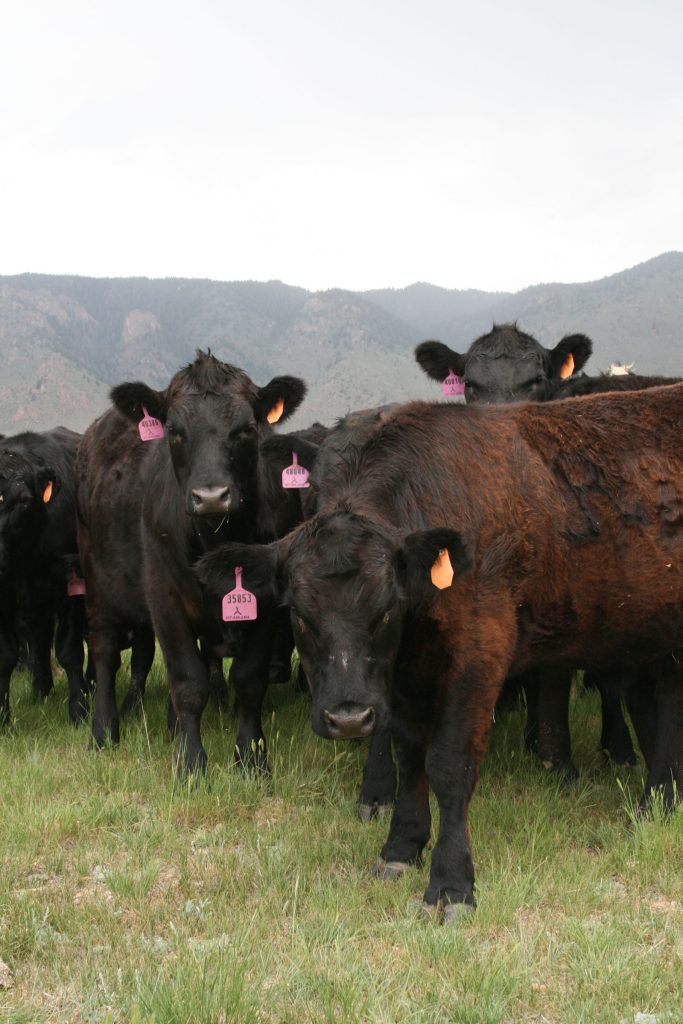New Rule in effect: USDA’s EID Rule goes into effect at the beginning of November

On Nov. 4 the U.S. Department of Agriculture’s (USDA) rule regarding mandatory electronic identification (EID) tags for certain classes of cattle and bison will go into effect.
Finalized at the end of April this year, the new rule amends a previous USDA rule from 2013 which required visual identification tags for interstate movement of sexually-intact cattle and bison 18 months of age or older; cattle and bison of any age used for rodeo, recreational events or shown for exhibition and all dairy cattle.
Now, eartags applied to these cattle and bison must be both visually and electronically readable.
What will change?
According to University of Nebraska-Lincoln Extension Educator Bethany Johnston, under this new ruling, cattlemen can expect the orange metal clips placed in heifers’ ears when they receive the brucellosis (bangs) vaccine to soon be relics of the past.
Instead, veterinarians will now be using a USDA 840 EID tag, which comes as a button and includes the country code for the U.S. – 840 – and the official USDA shield.
According to Johnston, the tag will also have a unique 12-digit number to identify individual animals.
“The 840 tags provide animal identification to trace animal movement in the event of an animal disease,” says Johnston. “The 15 numbers can be visually read off of the EID button or with a computerized EID reader or wand.”
Although there are other types of EID tags on the market, the new rule requires 840 EID tags be used to replace metal bangs clips.
What does this mean
for producers?
Johnston explains animals with old metal tags already in their ears will be “grandfathered in” and will not need a new 840 EID tag.
For animals that do need tagged, Johnston says producers can put the tags in themselves or have their vet do it.
“Your vet will put 840 EID tags only into animals which used to require a metal clip for identification,” states Johnston. “For example, if a producer tags all of their calves at weaning with 840 EID tags, their vet will record those EID numbers when they give the bangs vaccine to heifers. The vet wouldn’t have to put a new EID tag in.”
Johnston notes it is also important to check with the sale barn on what records are required.
“For example, if a producer is selling breeding heifers, records showing the EID numbers matching the bangs vaccination might be helpful,” she says.
Producers who do tag their animals themselves are reminded, while 840 EID tags come as buttons, a matching visual hanging tag is also available.
Johnston says these tags should be placed in the middle rib of the ear with the 15-digit number viewable on the top of the button. This is a different from the metal tag placed in the top of the year.
“This could be an issue for those who have a visual tag in each ear, plus a fly tag in each ear,” notes Johnston. “Adding an EID tag would make five tags per animal and one may run out of room in the middle ribs of the ear.”
In this case, she suggests producers reach out to their tag manufacturer for tag placement recommendations.
Additionally, Johnston says producers will need to use the premise ID number of their veterinarian or establish their own.
A premise ID number will allow state and federal agencies to track the path of each animal back to the producer in the case of a disease outbreak.
“Ideally, the EID tags will speed up the process and reduce losses during a disease outbreak,” Johnston concludes.
Hannah Bugas is the managing editor of the Wyoming Livestock Roundup. Send comments on this article to roundup@wylr.net.





